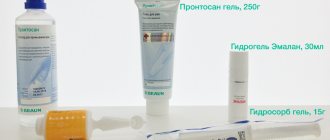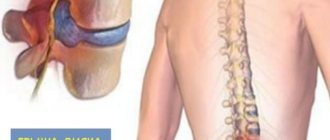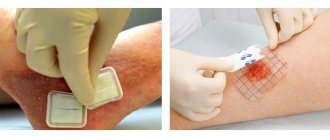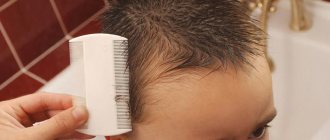Bedsores are painful injuries to the skin that occur as a result of prolonged, continuous compression of tissue. People who have suffered a serious illness or bone fractures, as a result of which they are in an immobilized state, are predominantly susceptible to the development of bedsores.
Treatment of this complication is quite long and difficult, in advanced cases requiring the help of a qualified specialist. In order to select the most effective remedy for bedsores, the doctor must determine the stage of the pathological process. In addition, treatment of bedsores with folk remedies is allowed. The most effective traditional medicine recipes are time-tested and help achieve the desired results, but before using them you should consult your doctor.
Professional care for bedridden patients and assistance in choosing medications for the treatment of bedsores are offered by highly qualified specialists from the rehabilitation clinic of the Yusupov Hospital.
Reasons for education
Poor circulation, continuous compression of soft tissues and blood vessels leads to the occurrence of stagnation in them and their gradual death (necrosis). This complication occurs especially often (7 out of 10 cases) in older patients. This is caused by the fact that in older people the functioning of the circulatory system deteriorates and the process of tissue self-healing slows down.
Timely implementation of preventive measures and competent treatment can prevent the formation of bedsores. If the medical personnel caring for the patient or family members did not pay attention to the first signs of an approaching problem, then spots on the skin can quickly turn into deep festering wounds, and fistulas can form in their place. The development of severe complications can even lead to the death of the patient.
Bedsores are very difficult to treat, the wounds are cleared slowly, they may re-suppurate, and the formation of new necrotic areas. The fact that the patient is still in a supine position also complicates healing.
But tissue necrosis can occur not only in patients who have been on bed rest for a long time. Any prolonged external compression of tissues, even if the body is in normal condition, can lead to the formation of bedsores. Such a complication can be caused, for example, by an incorrectly applied plaster cast, the patient’s constant presence in a wheelchair, impaired tissue nutrition as a result of severe damage to the spinal cord, and so on.
Most often, bedsores form in areas where there are bony protrusions. There is usually no fat layer there, so there is two-way pressure on the skin: from the outside and the inside. Depending on the position of the body, these may be the surfaces of areas such as
- hips, knees, ankles if the patient is lying on his side;
- cheekbones, iliacus and chest bones, pubis, when the patient is forced to lie on his stomach;
- ischial tuberosity, shoulder blades, elbows, sacrum, back of the head, heels when lying on the back;
- shoulder blades, buttocks, ischial tuberosity, foot bones in people who spend a significant part of the time in a wheelchair.
Among the reasons contributing to the formation of bedsores, several main factors can be identified.
- Overdrying of the skin
- Excessive moisture
- Compression of blood vessels and nerve fibers
- No microvibration
- Decreased muscle mass
- Every 1.5 or 2 hours the patient needs to be turned over and changed position so that external influence (pressure) is applied to other parts of the body. If areas with persistent redness of the skin or maceration develop, you should refrain from placing the patient on this area.
- Try to minimize the force of pressure on the surface of the patient’s body from the outside. Currently, online stores and pharmacies offer a wide selection of devices that provide pressure continuity and reduce its value. These include beds with a built-in special mechanism, anti-bedsore mattresses and pillows filled with water, helium, and air.
- The patient’s diet is also of great importance. First of all, it is necessary to provide the body with “building material” for the formation of new cells. Therefore, products offered to bedridden patients should contain sufficient quantities of not only vitamins and microelements, but mainly protein. An insufficient amount of it can lead to disruption of the immune and regenerative functions of the body.
- Strict adherence to all necessary hygiene procedures, especially after urination, defecation, use of medical diapers, absorbent diapers for bedridden patients, and so on. Several times a day, not only in the morning and evening, wipe the entire body with special products or even just wet wipes to prevent sweat from appearing on the skin.
- Antibacterial soap cannot be used to care for bedridden patients, as it “kills” not only harmful but also beneficial microorganisms for the skin. Alcohol-containing mixtures can cause drying of the skin, so they can only be used for oily skin.
- During manipulations, you should not rub the skin too much; it is best to use soft cotton washcloths, and after performing hygiene procedures, do not wipe the body, but gently blot it or let it dry on its own.
- Massage is also a must. To carry it out, you can use a soft terry mitten, which you can buy or make yourself. The red spots that appear cannot be massaged; you only need to treat the intact skin around it.
As a result, the superficial stratum corneum peels off faster, protecting the skin from external influences.
This problem can occur as a result of excessive sweating, urinary and fecal incontinence. An aggressive environment causes skin irritation, it swells, and friction increases. In addition, high humidity promotes the development of infection.
Blood vessels cannot fully perform their functions: provide tissue cells with nutrients and oxygen. Hypoxia (oxygen deficiency), lack of nutrition, deterioration of metabolism in tissues, as a result of the inability of nerve fibers to perform their functions, lead to a decrease in cell viability and their death.
Compression of the lymphatic vessels negatively affects the functioning of the excretory system. Used and dead cells, along with toxins, processed substances, and waste products, accumulate in the intercellular space and tissues. This, in turn, leads to a decrease in immunity. Microbes and viruses freely penetrate the body, inflammatory processes develop, purulent complications, even blood poisoning.
Even when the body is at rest, muscle cells continue to produce energy due to microvibrations of muscle cells. It promotes more efficient flow of biochemical, metabolic, and physiological processes in the body. The level of microvibrations is maintained at a sufficient height due to physical activity and sports. That is why a sedentary lifestyle leads to a deficiency of this energy, and, as a result, to inhibition of the basic functions of the body.
A decrease or complete absence of muscle load, a sedentary (or completely immobile) lifestyle are the causes of atrophy - a decrease in muscle mass, which in turn leads to a reduction in microvibrations.
Taking into account all of the above factors, the formation of bedsores in bedridden patients and disabled people leading a sedentary lifestyle is a very important problem. The formation of such defects occurs very quickly, and, despite the fact that this complication has been known for a long time, there is not yet a sufficiently effective method of treating and preventing the disease that can quickly restore all functions of the body. The search for new modern therapeutic agents continues, the task still remains relevant.
What are bedsores?
Bedsores typically occur in patients who are seriously ill, bedridden for a long time, or people in a wheelchair. Bedsores are damage to the skin and underlying tissues that occur due to disruption of their nutrition, prolonged pressure on a specific area of the body. Bedsores often occur on areas of the skin located above bony protrusions: elbows, knees, hips, buttocks, sacrum. For those who use a wheelchair, the damage is localized as follows: • Buttocks, sacrum; • Shoulders, spine; • The back of the legs, arms – the places that support the chair. In bedridden patients, damage may occur on: • The back of the head, temples; • Ears; • Shoulders, shoulder blades; • Hips, lower back, sacrum; • Heels, knees, popliteal area.
Types of bedsores
It may seem strange to most people who have not encountered this problem, but in a sick person, whose body is weakened by the fight against a serious illness, bedsores can appear after just two hours of lying or sitting in one position. The process from minor redness to the appearance of the first signs of necrosis, and then serious wounds, can occur very quickly.
In accordance with the symptoms accompanying formations at various stages of their development and transformation, 4 stages of the disease are distinguished.
- Areas of greatest pressure, which are the most likely areas of damage, are characterized by slight redness, a slight local increase in temperature, and soreness to the touch. At this stage, there is still no structural damage to the skin. If you start treatment at this stage, it will not be difficult to get rid of the first symptoms.
- If treatment is not started, the formation of bedsores will continue. The formation of blisters, loss of integrity and detachment of the skin will begin, the temperature will rise, and tissue swelling will increase. The lesion may reach the layers of subcutaneous tissue.
- This stage is characterized by more serious lesions, up to the first signs of necrosis (death) of areas of the epidermis; muscle and fatty tissue can be observed through areas with dead cells; the wounds are filled with pus.
- The destruction process involves not only skin tissue, but also muscle, bone, fat, and tendons. The wounds are completely filled with purulent contents, the area of necrosis expands, necrotic processes affect all layers. In this situation, therapeutic treatment will no longer bring relief to the patient; surgical intervention is mandatory.
Degrees and symptoms of bedsores
The first subjective sensations that a patient may experience: • Tingling on the skin where a bedsore is likely to develop. This is due to stagnation of blood and lymph that feed the nerve endings; • Numbness (loss of sensation). It occurs on the affected area of the body after about 3 hours. Visible signs of a bedsore: • Stagnation of peripheral blood and lymph. Initially it appears in the form of venous erythema, blue-red in color, and has no clear boundaries. Localization sites are areas of bone and muscle protrusions in contact with the bed. The intensity of skin coloring gradually increases; • Desquamation of the epidermis with or without preliminary formation of vesicles with pus. These are the main signs of a developing bedsore. It is urgent to take measures to prevent further deterioration of the pathology. The development of bedsores occurs in 4 stages, which are accompanied by different symptoms. Stage I – initial. Its signs are as follows: • The skin is not damaged; • There is redness (light skin). The skin does not change color when pressed; • Dark skin color often does not change. The skin does not turn white when pressed. Sometimes appears irritated, cyanotic or purple; • The affected area of the skin may be sensitive, painful, softer, cooler/warmer compared to other areas. Stage II – The bedsore turns into an open wound. Signs: • The epidermis, part of the dermis, is either damaged or missing; • Bedsore – a swollen, red-pink sore (similar to an ulcer); • May have the appearance of an intact or burst bubble of fluid. Stage III – deep wound. Appearance: • Necrosis, as a rule, reaches not only the skin, but also adipose tissue; • The ulcer becomes like a crater; • The bottom of the wound may have dead, yellowish tissue; • Damage may spread between layers of still healthy dermis. Stage IV – extensive tissue necrosis. Appearance: • Tendons, muscles, bones may protrude into the wound; • The bottom of the wound is dark, hard dead tissue; • The lesion extends far beyond the lesion.
Disease prevention
As sad as it may be, it is almost impossible to avoid the formation of bedsores in bedridden patients. However, it is quite possible to delay their formation, make the course of the disease easier, and not cause so much inconvenience and pain to a person. To do this, first of all, it is necessary to implement appropriate preventive measures in a timely manner.
It is necessary to take measures to prevent the formation of wounds and ulcers from the first day of the disease. Once the necrotic process has started, it is quite difficult to stop it. When moving to each subsequent stage, the patient will experience more and more suffering and discomfort, and the likelihood of a complete cure will decrease.
Preventive measures taken to prevent the formation of bedsores should be aimed at activating blood circulation, restoring microvibration of tissue cells, and eliminating other factors that provoke the appearance of wounds and ulcers. We must try to return the patient to an active lifestyle as soon as possible. To do this, you can use special medical beds and accessories that allow the patient to at least turn from side to side independently, perform any other movements, actions, even if the function of movement and walking has not yet been restored.
Prevention of bedsores includes the following manipulations.
Modern medical accessories, which should be selected depending on the stage of the disease and the complexity of its course, make caring for bedridden patients as simple as possible, allowing not only to avoid the occurrence of bedsores, but also to provide the patient with comfortable living conditions.
Why are bedsores dangerous for the elderly?
Bedsores can be life-threatening if they do not heal for a long time. It is worth remembering that an elderly person has less fat and weak muscle tissue, fewer blood vessels, they become thin, and as a result, any wounds heal more slowly.
An elderly sick person has a greater risk of getting bedsores due to the following reasons: inability to move (stroke or post-stroke condition, bedridden patient, trauma, post-operative condition), drowsiness (because of this, the person changes body position less often), poor sensitivity (the person may not feel discomfort), poor wound healing.
Treatment of bedsores
If a bedridden patient is in an outpatient clinic, then he is cared for by qualified specialists who have the necessary knowledge, practical skills, and appropriate medical equipment. At home, the entire burden falls on the shoulders of family members. At the same time, it is not always possible to perform some manipulations, such as high-quality cleaning of the wound from suppuration, effective gas exchange that ensures drying of the skin surface, and tissue repair. Therefore, if a patient develops bedsores, it is necessary to consult with the attending physician, who will prescribe the appropriate treatment and prescribe procedures.
There are two methods for treating necrotic formations on the skin: conservative and surgical. In the first stages of the development of the disease, it is assumed that the doctor’s instructions are followed, including:
- local treatment with medications, careful hygienic cleaning of the damaged area and adjacent skin with hydrogen peroxide, saline, and so on;
- physical activity with the use of aids for the rehabilitation of disabled and bedridden patients within the limits accessible to the patient;
- the use of antifungal ointments, antibacterial drugs to treat affected areas;
- high-calorie protein diet, with the addition of vitamins (A, C) and microelements (iron, zinc sulfate).
At later stages, when the changes have reached the deep layers of tissue, surgical intervention is required, which involves: drainage of wounds, opening of purulent formations, antiseptic treatment, excision of ulcers, skin transplantation, application of musculocutaneous flaps, and so on. Typically, the hospitalization period is about one and a half months. With timely and correct treatment and careful medical care, in almost 80% of cases the patient’s condition improves significantly, and in 40%, bedsores are completely cured.
Only a doctor can determine the need for surgical intervention during the course of the disease. An untimely or incorrectly performed operation can lead to a deterioration in the patient’s general condition and an increase in the area of the lesion. At the same time, both the patient and his family members should be prepared for the fact that treatment may not lead to an improvement in the condition. As a result of insufficient blood circulation, the transplanted skin may not take root. Fluid may accumulate under the skin. Possible suture dehiscence, bleeding, secondary ulcer formation, skin necrosis and relapse of the disease.
How to treat bedsores
The causes of the appearance and development of bedsores are usually a weakening of the protective properties of the skin. Advanced age and dementia are aggravating and irreversible internal risk factors.
Failure to promptly treat bedsores is a direct threat to life for the following categories of elderly people:
- paralyzed patients;
- people in a coma;
- patients with a hip fracture;
- bedridden patients after a stroke;
- patients with reduced sensitivity in the later stages of dementia;
- patients with incontinence;
- people who are poorly nourished.
Dry skin is more susceptible to the action of irritating factors, which can disrupt the state of balance in it, leading to irritation and the appearance of dangerous phenomena.
Complications from bedsores
Incorrect diagnosis, incorrectly determined stage of development of the lesion, ineffective treatment, and insufficient care on the part of service personnel can lead to the development of quite serious complications against the background of bedsores, including the death of the patient. The most serious consequences include the development of the following diseases.
- Erysipelas
- Phlegmon
- Sepsis
- Gangrene
Or erysipelas is typical for older patients with stage II bedsores. This is an infectious disease caused by streptococcus, which penetrates the wound through damaged skin. Treatment involves the use of sulfonamides, penicillin antibiotics, and nitrofurans.
It is an acute inflammatory process of the cellular space as a result of penetration of E. coli and staphylococcus through the wound surface. Among the main symptoms of infection: high temperature, redness, pain, swelling, purulent contents. Broad-spectrum antibiotics are prescribed. The source of the lesion must be opened.
It is also an inflammatory process that can occur at stages III-IV of bedsores. This disease affects the entire body, therefore, if treatment is not started in a timely manner, it often leads to death. Anti-inflammatory treatment is carried out using glucocorticoids. Detoxification of the body is mandatory.
At stage IV of development, bedsores can lead to the development of gangrene. The complication is accompanied by darkening of the epidermis, rapid tissue necrosis, and a putrid odor. Upon palpation, a specific crunch is diagnosed. Intramuscular injections are prescribed to protect the tissue adjacent to the wound from infection. Treatment is surgical and involves amputation if the limb is affected.
To prevent the development of these complications, it is enough to provide the patient with proper systematic care, regular hygiene procedures, and strictly follow the instructions of the attending physician.
Causes of bedsores
The main cause of skin pathology is compression of tissue between the bone, as well as the hard surface that the human body touches. For example, soft tissues are compressed between a bone - a wheelchair or a bone - a bed, which leads to impaired blood circulation in small vessels. As a result, oxygen and nutrients cease to flow to the cells of the compressed zone. The area of tissue becomes dead and dies. Other causes of bedsores include friction and slipping. Friction on clothes or sheets occurs if the patient changes position on his own, or is moved or turned over by family members or a medical worker. Sliding is facilitated by the high elevation of the bed in the head area. Then the patient slides down. Another reason is an attempt to stay in a semi-sitting position without support. Factors associated with incorrect patient care: • Untidy bed; • Untimely change of underwear; • Hard, uneven bed surface; • Hips, lower back, sacrum; • Neglect of hygiene procedures. Factors that are associated with the individual characteristics of the patient: • Exhaustion, obesity of the patient; • Elderly age; • Diseases of the cardiovascular system; • Disorders of the innervation of the body (for example, strokes); • Disorders of the body's metabolic processes (water-salt metabolism, drinking restrictions, diabetes mellitus); • Unbalanced diet, lack of protein foods, protein metabolism disorders; • Uncontrolled processes of defecation and urination. Also, factors that provoke bedsores include excess/underweight, smoking, an allergic reaction to skin care products, seams, folds, buttons on underwear, injuries and diseases of the brain and spinal cord, sweating due to elevated body temperature.
Classical medicine
Therapeutic and surgical treatment takes a lot of time and effort from the patient and the people serving him. For a quick and, most importantly, effective cure, it is necessary to constantly monitor the patient’s condition, evaluate the appearance of the skin, carefully remove keratinized, diseased tissue, carry out air baths and measures to maintain blood circulation at a normal level, observe preventive measures, use special mattresses for bedridden patients from bedsores, sheets, pillows and so on. The use of medications prescribed by a doctor is also mandatory.
Diaper rash cream
These are not therapeutic, but prophylactic agents. If bedsores have already formed, then there is no point in using them. They are used after hygiene procedures for bedridden patients. They are applied to areas and zones that are often and for a long time exposed to high humidity or are subject to compression. They help increase tissue turgor, dry the skin, and reduce areas of maceration.
Ointment
This dosage form is used to fight infections, as a stimulant to accelerate regeneration processes, and so on. They are used at stages III-IV of the disease to treat deep wounds and ulcers. The most commonly used medications of this type include the following.
- Vishnevsky ointment
- Levomikol
- Solcoseryl
- Oak bark
- Field chamomile
- Sea buckthorn oil
- Onion
- Potato
- Baking soda
It was developed in the middle of the last century by a group of Soviet surgeons. Can be used to eliminate foci of inflammatory processes caused by various microbes. To treat bedsores, it is applied to the affected areas twice a day and fixed with a medical gauze bandage.
A more modern product with an antimicrobial, dehydrating effect based on chloramphenicol. During the day, a single application is sufficient, after which the affected area is covered with a cloth or gauze.
A medicinal product that improves regeneration processes and blood microcirculation, which is due to the presence of calf blood extracts, vitamins, microelements, and nutrients. Used 2 times a day.
If there is positive dynamics, the prescribed ointment is used until complete recovery is achieved. Otherwise, it should be replaced with another, more effective drug or used in combination with another ointment.
Medicines
In addition to acting directly on the affected areas themselves, the doctor must also prescribe systemic drugs: antibiotics, antithrombosis, anti-inflammatory, to improve microcirculation, to relieve pain. The duration of the course and the dose of the drug taken are determined by the doctor depending on the patient’s condition. The course of treatment with antibiotics is usually from one to one and a half weeks, anti-inflammatory - up to 2 months.
Medicines are taken before the healing process begins, while the ointment is applied until the final epithelization of the affected surface.
Prevention of bedsores
To eliminate the first signs of a bedsore it is necessary: • Change the patient's position once every 2 hours. If there are no contraindications, it is recommended to use special pillows that will change the position of the limbs and body relative to the surface of the bed and create gaps between the bed and the skin; • Monitor the head of the patient's bed. It should be level or lower with it; • Control the moisture of the patient’s skin using hygiene products - washing cream, solution, foam, spray, warm baths (do not use hot water). These procedures should be done at least 2 times a day. If there is uncontrolled defecation, then it is necessary to remove contamination as quickly as possible; • Promptly remove excess moisture from the epidermis and skin folds (remains of liquid food, water, urine, sweat, wound exudate). For this purpose, special absorbent pads, napkins, and towels are used; • Remake your bed regularly. Bed linen should be changed at least once a day; • Use anti-decubitus mattresses of cellular or balloon type. They are equipped with silent compressors, which is necessary to maintain and change the rigidity of the base. The mattresses also have adjustable and programmable inflation in different areas. • Do not perform intense massage. Only light stroking of the area of skin with signs of a bedsore is allowed. There should be no friction during the massage; • Use special pillows for patients in wheelchairs, which can be filled with gel, air, or foam. It is also important to monitor changes in body position in the chair. Bedsores are pathologies whose occurrence is best avoided. But if this was not possible, then when affected skin lesions occur, development occurs very quickly and is characterized by long-term treatment of the wound. The outcomes of bedsores are quite dangerous. The resulting defects, as well as the consequences of bedsores, are treated exclusively in a hospital setting.
Features of caring for bedridden patients
If an elderly or sick person spends a long time in a lying position, prevention should be carried out using special means for washing and treating the skin under the diaper. A wide variety of products are offered by well-known brands Tena, Seni, TerezaMed, Abena. In the first stage, you should consult a doctor and use a good cream or ointment for bedsores.
To prevent diaper rash, various oils and barrier products are used, as well as protective products from Seni Care and other manufacturers.
Factors that provoke the occurrence of soft tissue necrosis are:
- Incorrect or insufficient hygiene of a bedridden patient;
- Hard sleeping place, folds and bumps, wet bed or underwear;
- Inadequate nutrition (protein deficiency).
Risks and complications from bedsores
The most life-threatening are stage 3 and 4 bedsores. A common complication from bedsores is the formation of panniculitis, when the subcutaneous fatty tissue in the affected area becomes inflamed. A purulent disease of the soft tissues can lead to the formation of gangrene, due to which the skin and tissues are destroyed and cannot be restored.
Complications from bedsores cause severe discomfort to the patient, including fever, constant pain and swelling. Purulent formation requires immediate medical attention. If you do not promptly treat the wound and take antibiotics, the complication can lead to urgent amputation of the limbs in order to save the patient’s life.
People with weak immunity and advanced stages of bedsores have a high risk of blood poisoning. In this case, urgent resuscitation of the patient is required using medications and IVs until the spread of the infection can be controlled.
How to recognize bedsores?
Patients who predominantly lie on their backs complain of the formation of bedsores in the area of the shoulder blades and sacrum. Also, areas damaged by necrosis are found on the back of the head and heels. When lying on your side, the following areas may be affected:
- hips;
- ears;
- whiskey;
- shoulders;
- knees;
- ankle
Symptoms of necrosis:
- formation of red or blue edema;
- increased sensitivity in the affected area and pain;
- blisters, which, when opened, provide an overview of superficial wounds;
- formation of a crater with purulent discharge.
Also, yellowish areas of necrosis form at the edges of the wound, which gradually acquire a dark tint.
Stages of bedsores
Depending on the degree of necrosis, the method of treating the patient is selected. Sometimes it is enough to treat the wound with a disinfectant solution, which can be done at home, but sometimes surgical intervention is required.
Prevention and treatment of stage 1 bedsores
More often, this degree of the disease is treated quickly and without any problems. The disadvantage of pathology of this degree is mild symptoms, which makes it impossible to start treatment in a timely manner and prevent the development of the disease. The main symptoms of stage 1 bedsores:
- change in the shade of the affected area;
- skin irritation;
- pain at the site of injury.
To treat necrosis, it is recommended to examine the patient to identify the listed changes. Only in this case will it be possible to prevent the development of ulcerations.
Prevention and treatment of stage 1 bedsores are the same. Therapy involves:
- treating the affected area with camphor alcohol or other solutions;
- removing secretions and drying the skin surface;
- treating the affected area with ointments that accelerate blood flow;
- cold and hot shower.
Doctors recommend combining treatment with the use of polyurethane film. The patch will not be able to cope with the problem. It is advisable to use it only to prevent microdamage.
Prevention and treatment of bedsores Stage 2, non-infected wound
At this stage, the skin damage resembles an ulcer or small wound. Feature: swollen edges. If a person is conscious, then he can talk about the following symptoms of the second stage of bedsores:
- pain at the site of skin lesions;
- burning;
- itching.
Patients with stage 2 bedsores try to avoid contact of the wound with bedding, and also complain about uncomfortable clothing.
Treatment of bedsores in the form of small wounds should be carried out using medications recommended by a doctor. To prevent the development of the disease, it is recommended to clean the wound from effusion and necrotic cells, and also treat the affected area with an antiseptic.
Additionally, doctors recommend applying antiseptic bandages and regularly inspecting the area for inflammation.
If a wound becomes infected during treatment, it is necessary to add treatment with an antibacterial drug.
Prevention and treatment of bedsores Stage 3, non-infected wound
The damaged area looks like this:
- necrosis affects all layers of the epidermis;
- on the skin the wound resembles a crater with red, swollen edges;
- Clumps of dead yellow tissue form on the bottom and walls of the damaged area.
At this stage, the nerve processes die off, which reduces the level of pain. Treatment is carried out in the same way as in the case of the second stage of necrosis. The only caveat is that more thorough treatment of the wound and cleansing it of dead cells is required.
Prevention and treatment of bedsores Stage 4, non-infected wound
Such bedsores are typical for patients with weak immunity. Symptoms of the disease:
- great depth of the wound;
- darkened crater floor;
- pale or reddened skin around the wound.
In the most severe cases, when it comes to extensive necrosis, large areas of dead tissue form. It is noteworthy that grade 4 necrosis does not bring discomfort or pain to the patient. This is explained by the destruction of nerve endings.
In this case, treatment is carried out under the supervision of a surgeon. It is also necessary to organize care for bedridden patients with bedsores. Before using antiseptics, it is recommended to promptly excise necrotic tissue to prevent the development of infection and speed up the regeneration process. During the treatment process they use:
- necrolytics;
- tissue repair stimulators;
- stimulants that accelerate blood flow;
- anti-inflammatory drugs.
Dead skin areas are removed through surgery.
Prevention and treatment of bedsores Stage 4, infected wound
Accompanied by an unpleasant odor and the formation of purulent contents. In this case, serious medical attention is required. In this case, urgent surgery is necessary to remove the affected cells.








